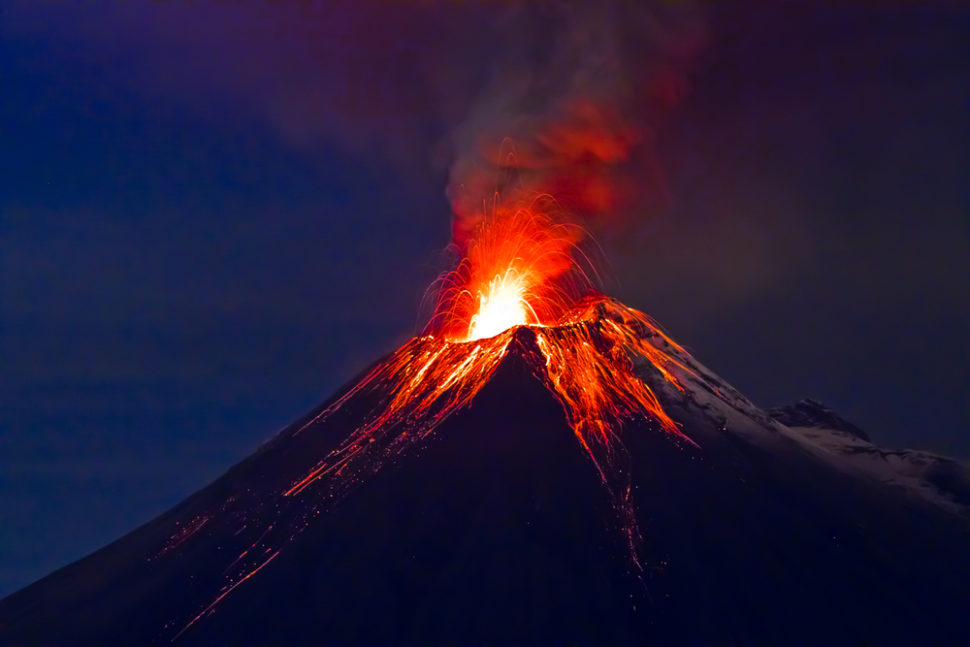Around 800 million people in the world live within 62 miles (100km) of a potentially active volcano, and there’s plenty of these.
Today, the world counts 1,500 volcanoes as potentially active, with 10 percent of these, or 169 volcanoes, located within the boundaries of the U.S. This far into 2019, the Smithsonian’s Global Volcanism Program lists 61 confirmed eruptions.
Less than half of these active volcanoes — 50 to 85 erupt each year — is monitored. The extreme conditions in the immediate surroundings of active volcanoes led to a significant decrease in the lifespan of sensors and other monitoring equipment.
Getting very close to a volcano to monitor it up close and personal is a risky business, and predicting future volcanic eruptions is not an exact science.
MOUNTS Project: AI Monitoring Volcanic Eruptions from Space
Although categorized, no two volcanoes are the same due to different chemistry powering the activity in magma reservoirs and the role of plate tectonics.
Volcanologists monitor active volcanoes and study their eruption history using signs like local seismicity and the surface deformation around them. But scientists can’t make forecasts as precise as they would like.
Even dormant volcanoes, which supposedly posed no threat and are rarely monitored, can engage in a deadly eruptive phase at any moment. In fact, it happened in 2008 with the Chaitén volcano that erupted after staying dormant for more than 9,000 years.
Volcanologists are now turning to artificial intelligence and satellite imagery to monitor the most of volcanoes they can.
Today, thanks to MOUNTS, short for Monitoring Unrest from Space, scientists are currently monitoring 18 volcanoes from all over the world.
According to a paper, published in Remote Sensing, MOUNTS is a volcano monitoring platform that uses high-resolution spatial and temporal satellite imagery provided by the ESA’s Sentinel missions.
To forecast volcanic eruptions, MOUNTS looks for signals in satellite imagery, such as changes in the landmass surrounding a volcano, gas emissions, and heat anomalies.
If a dormant volcano suddenly shows changes in behavior, it could mean an eruption is in the making. AI algorithms sift through the datasets and calculate all the parameters that could hint of any changes in the volcanic activity.
“We don’t want to monitor [volcanoes] all the time,” says Andreas Ley, a member of MOUNTS’ research team. “We want the system to tell us when something interesting is going on.”
The team designed a Convolutional Neural Network (CNN) that’s able to detect, in real-time and 24/7, strong deformations in the interferograms produced by MOUNTS.
The researchers mention some recent eruptions attesting to the utility of MOUNTS system, like Erta Ale in 2017, Fuego in 2018, Kilauea in 2018, and other volcanoes around the world.
“The data processed by MOUNTS is providing insights into eruptive precursors and eruptive dynamics of these volcanoes, and is sharpening our understanding of how the integration of multiparametric datasets can help better monitor volcanic hazards.”



















Comments (0)
Most Recent